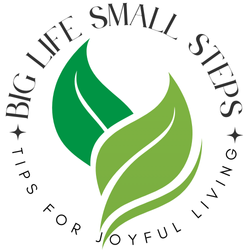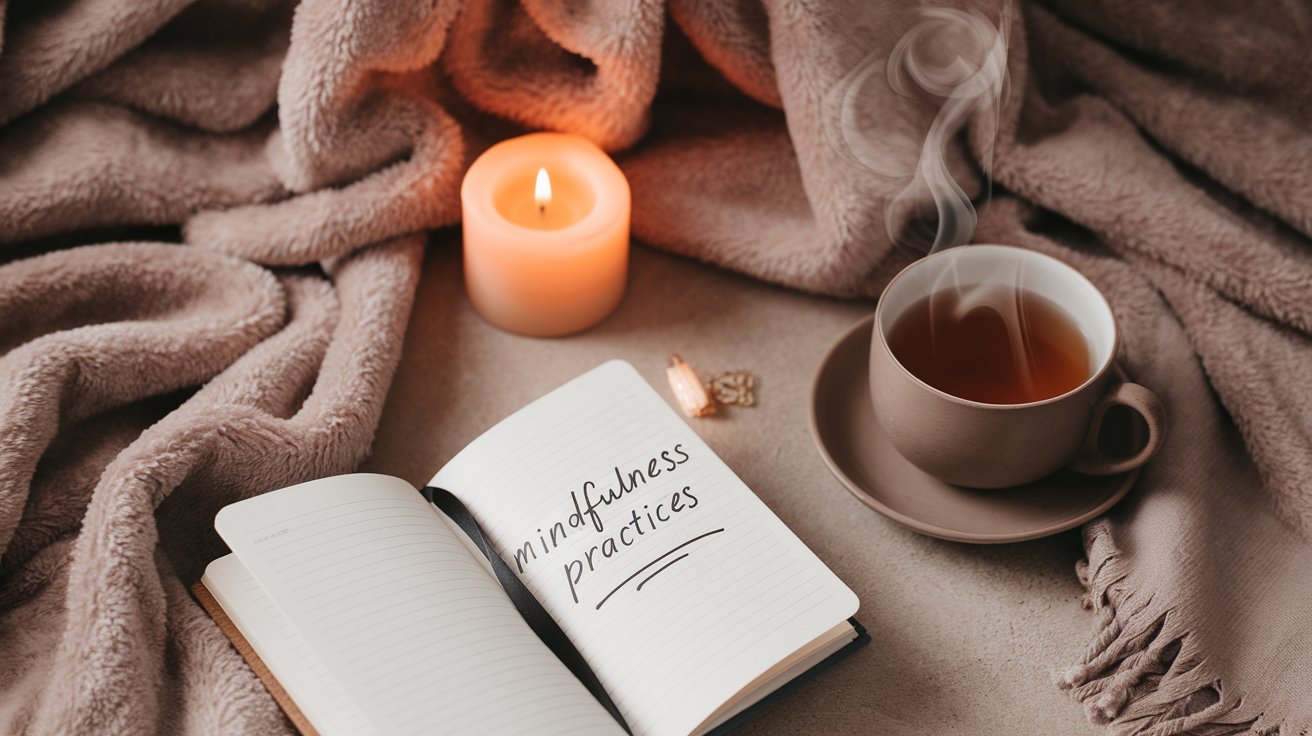7 Mindfulness Practices to Reduce Stress and Find Peace
Life can feel overwhelming at times, but finding moments of peace doesn’t have to be complicated. Mindfulness—a practice of focusing on the present moment—offers simple yet powerful ways to reduce stress and bring calm into your day.
In this post, we’ll explore seven easy mindfulness practices you can incorporate into your routine. These small steps can help you feel more grounded, centered, and ready to take on the day with clarity and peace.
1. Start Your Morning with Gratitude
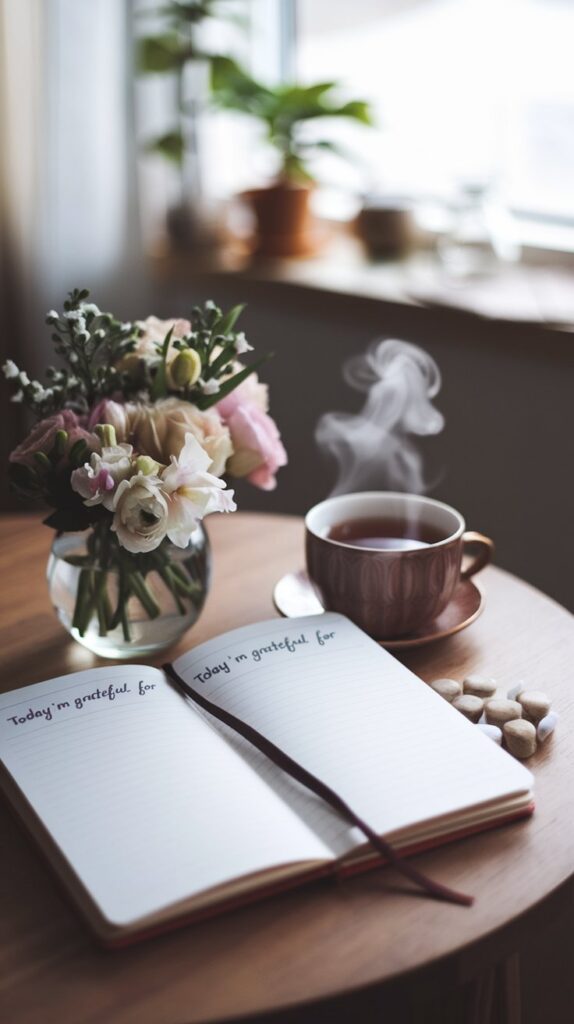
Before reaching for your phone or diving into your to-do list, take a moment to reflect on what you’re grateful for. Simply jot down three things—big or small—that bring joy to your life.
Why It Works: Gratitude shifts your mindset, helping you focus on positivity instead of stress.
Example:
- Your morning coffee.
- A cozy blanket on a cold day.
- A loved one’s smile.
Picture This: A journal open on a wooden table, with “Today I’m Grateful For” written across the top. A steaming cup of tea and a vase of fresh flowers add a calming touch.
2. Practice 5-Minute Breathing Exercises
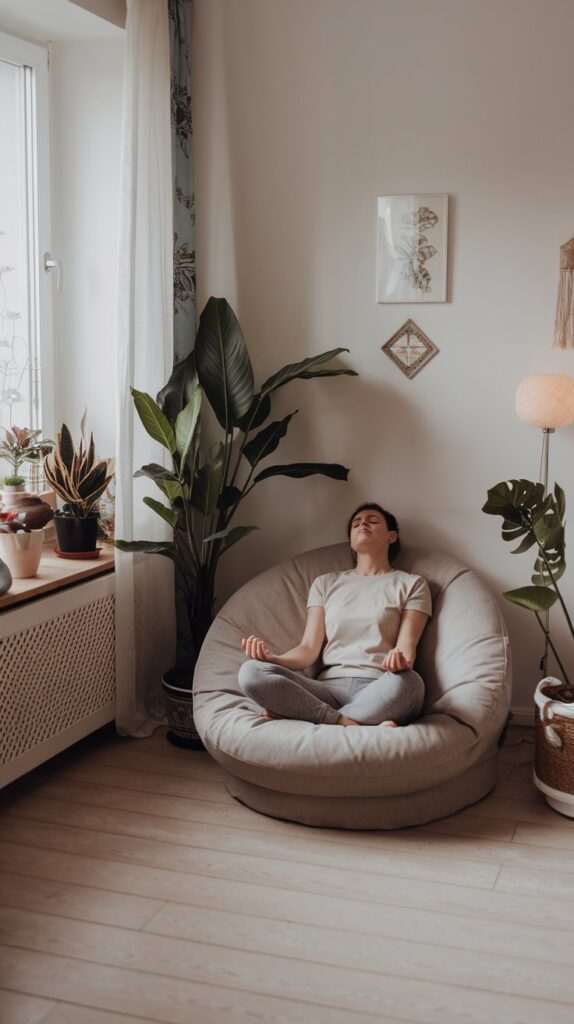
Find a quiet space, sit comfortably, and focus on your breath. Inhale deeply for a count of four, hold for four, and exhale for four. Repeat for five minutes.
Why It Works: Deep breathing calms the nervous system, reducing stress and promoting relaxation.
Tip: Set a timer on your phone so you can fully focus.
Picture This: A serene corner with a soft chair, a potted plant, and a person sitting cross-legged with eyes closed, hands resting on their knees.
3. Take a Mindful Walk

Head outside and focus on your surroundings. Notice the texture of the ground beneath your feet, the sound of birds, or the feeling of sunlight on your skin. Leave your phone at home to fully immerse yourself.
Why It Works: A mindful walk combines the stress-reducing effects of nature with the benefits of physical movement.
Tip: If walking outside isn’t an option, try pacing slowly indoors while focusing on your steps.
Picture This: A walking path lined with trees, dappled sunlight streaming through the leaves, and a person strolling with relaxed posture and a slight smile.
4. Engage in a Single-Task Activity

Choose one task—washing dishes, folding laundry, or sipping tea—and give it your full attention. Notice the textures, smells, and sensations involved.
Why It Works: Focusing on one thing at a time can reduce overwhelm and train your brain to be present.
Example:
- Notice the warmth of the water while washing dishes.
- Focus on the feel of fabric while folding clothes.
Picture This: A sink filled with soapy water, hands washing a mug, and natural light streaming through a nearby window.
5. Listen to a Guided Meditation

Guided meditations are perfect for beginners or anyone looking for structure in their mindfulness practice. Apps like Calm, Headspace, or Insight Timer offer short, beginner-friendly options.
Why It Works: Having someone guide you takes the guesswork out of meditation, allowing you to relax more fully.
Tip: Try a 10-minute meditation for stress relief before bed.
Picture This: A smartphone resting on a bedside table, showing a meditation app screen, with dim lighting and a calming ambiance in the background.
6. Try Body Scanning
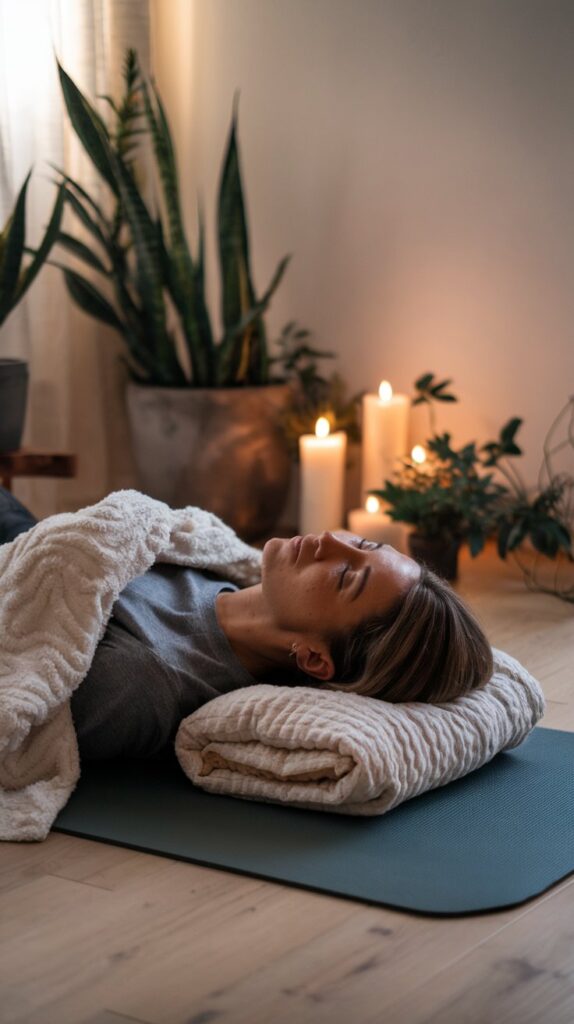
Lie down in a comfortable position and focus on each part of your body, starting from your toes and working upward. Notice areas of tension and consciously relax them.
Why It Works: Body scanning helps you reconnect with your body and release physical tension caused by stress.
Tip: Use a soft blanket or yoga mat for comfort.
Picture This: A person lying on a yoga mat with a cozy blanket, soft lighting in the room, and a peaceful expression.
7. Journal Your Thoughts and Emotions
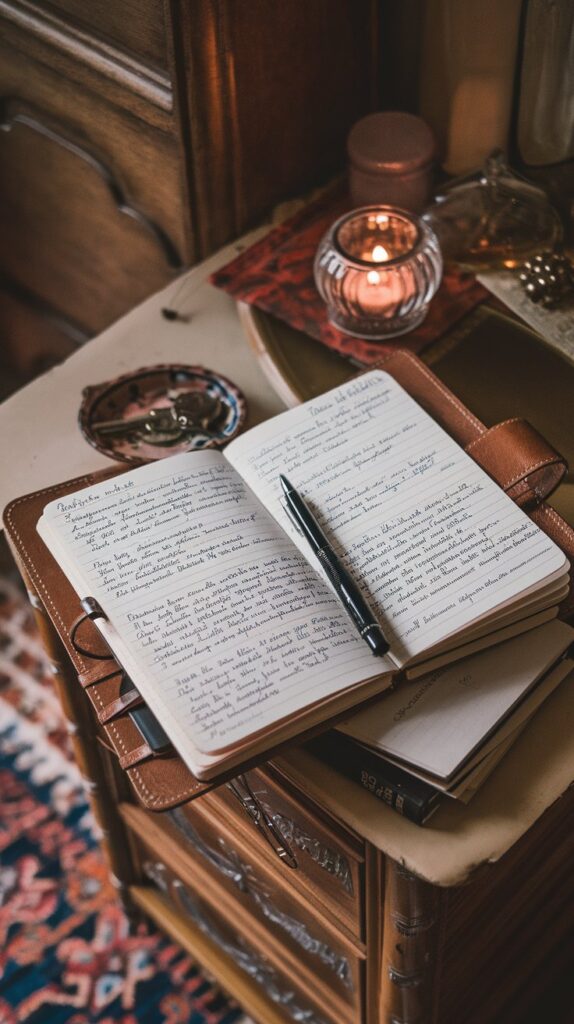
Take five minutes at the end of the day to write about what’s on your mind. Don’t worry about grammar or structure—just let your thoughts flow.
Why It Works: Journaling helps you process emotions, gain clarity, and release mental clutter.
Prompt: “What made me feel calm today? What’s one thing I’m looking forward to tomorrow?”
Picture This: A handwritten journal on a bedside table, with soft candlelight and a pen resting across the page.
Bringing Mindfulness into Your Life
Mindfulness doesn’t have to be complicated or time-consuming. By incorporating even one of these practices into your day, you can start to experience the calming benefits of being present. Small steps lead to big changes—and a more peaceful you.
Call to Action
Which of these mindfulness practices will you try first? Save this post for inspiration and take one small step today toward a calmer, more peaceful life.
